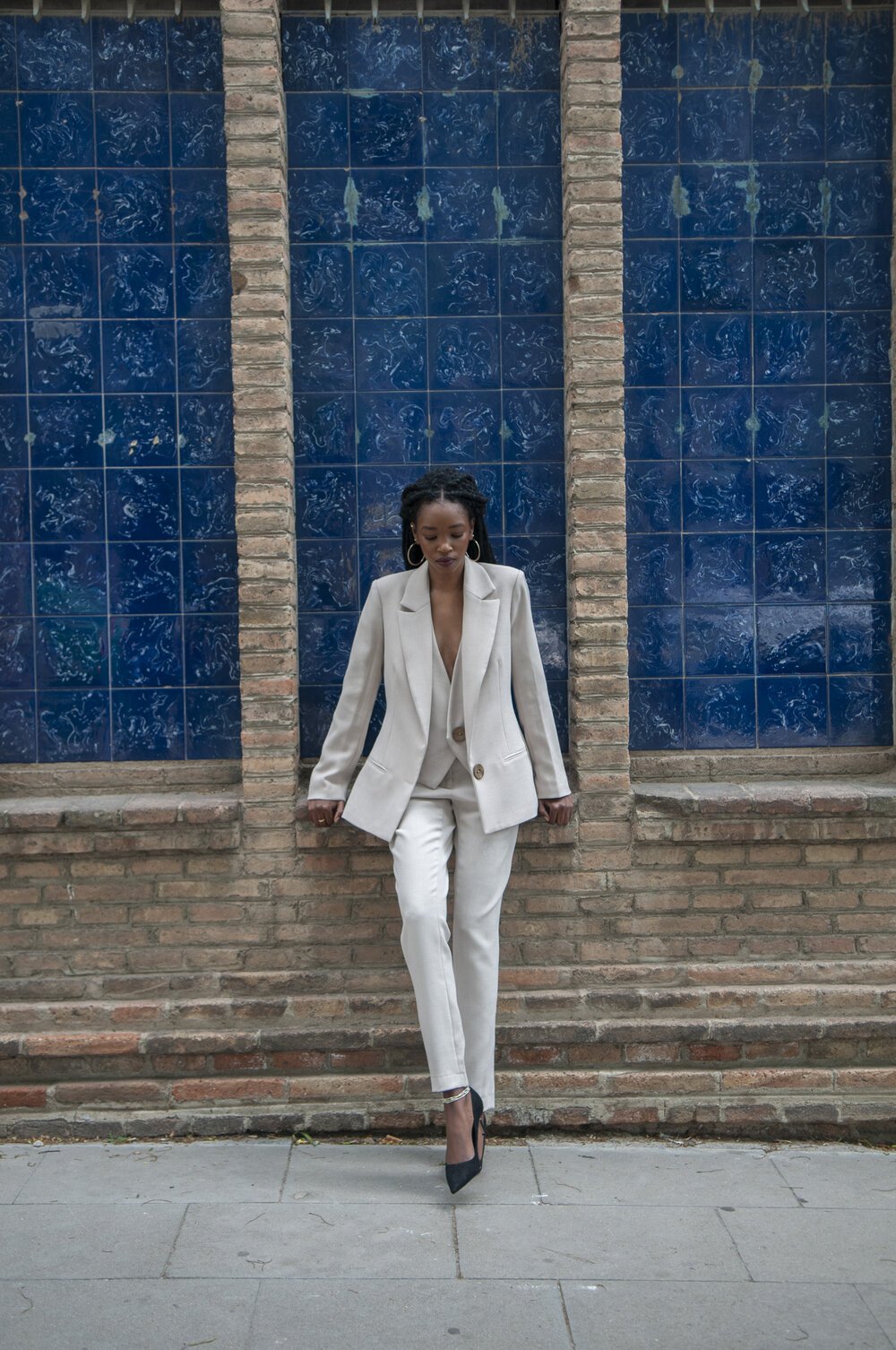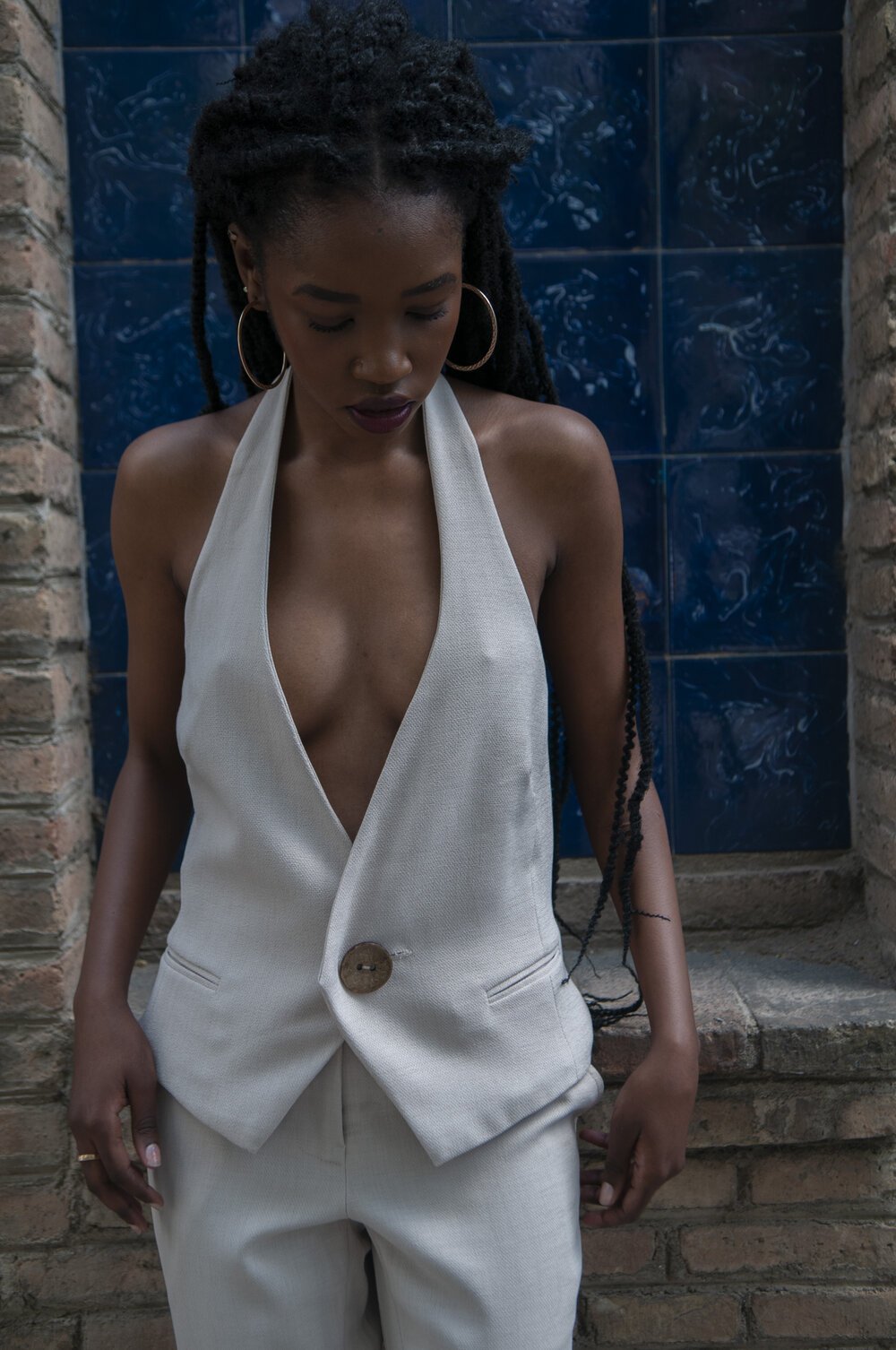Achieving balance: An interview with Clare Holden
This article was first publish on theragrevolution.com.
For White Night founder Clare Holden, the concept of sustainable fashion can be summed up in one word: balance. Two minutes into our conversation, she mentioned Yin and Yang, the Ancient Chinese concept that describes how two forces that at first glance look opposite to each other, may actually be complementary, even interdependent. The name of her brand, White Night, encapsulates this concept. But does it apply to the fashion industry as well? Is it really possible to create clothes that dazzle, in a way that doesn’t destroy? Holden is determined to prove that yes, sustainable fashion is not only achievable, but necessary.
The Yin
Here’s the Yin: White Night clothes are timeless- all clean lines and classic silhouettes, in colours that will never go out of trend: blacks, whites, creams. There are three-piece suits, a white spaghetti crop top paired with a white maxi skirt, and a full body dress that looks like it could’ve come straight from Ancient Greece. The clothes exude luxury and sophistication, made for women on a mission to tick boxes off their to-do list, but want to look good while doing so.
“As you get older, you need to have practical clothes for work, but you also want to have fun. It was just these different elements that I want to capture in the brand,” Holden tells me. “Women always ask, ‘Is it too low? Is it too short? Is it too long? Is it too frumpy?’ But women should just be able to wear whatever they want, and I wanted my clothes to almost be secondary to the person who’s wearing them.”
White Night started while Holden was working in a boutique in Barcelona. The owner told her: “Look, if you want to do something, you can take a rack at the store.” And so she did, with the mission to create clothes that will not outshine the women wearing them. “I wanted the clothes to be almost secondary to the person who's wearing them,” she said. “I really wanted it to compliment the person wearing it and that you really saw their personality as opposed to almost being a supporting character.”
The Yang
The Yang is the sustainable production of these clothes. “It’s all about designing and manufacturing garments that avoid harming the environment as much as possible, and also avoid the exploitation of people,” she said. White Night stands out at a time when words like “eco-friendly” and “ethically-made” have become buzzwords, as consumers become more aware of the environmental and social impacts of the fashion industry. Far from a green façade, the brand fully embraces sustainability and strives to be as transparent and traceable as possible. This means that Holden is meticulous about every aspect of making her garments, from design to shipping. “With every decision I make, I spend a lot of time just on research, even down to the buttons I use,” she explains. Even the hangers are well-thought-out, made out of recycled cardboard. Why? “Hangers are the plastic straws of the fashion industry.”
The pandemic has made Holden’s mission more complicated. When the brand was based in Spain, everything was made by workers within a 5 mile radius of Holden’s house, from the textile makers to the seamstresses. There was no need for online shipping, as her garments were sold in local stores in the area. But then COVID-19 hit, and all of a sudden Holden had to think of not only ethically-sourced fabric, but eco-friendly boxes and hangers. “I had to move from Spain to Dublin,” she says. “So I had to find new sources of ethically-made fabric, hire new seamstresses that are as skilled as the ones I had in Barcelona, and find out the most sustainable way to operate an e-commerce business. It was me finding that balance all over again.”
Achieving balance remains a priority for Holden as White Night prepares to release their fourth Spring/Summer collection, this time with bags made from vegan leather. “I’m really excited to show everyone what we’ve been working on,” she says. “The pandemic has made a lot of things very difficult, but one outcome I’m glad about is that people are now even more conscious and aware of their impact on the planet. I’m really proud to be part of a movement that supports that.”




